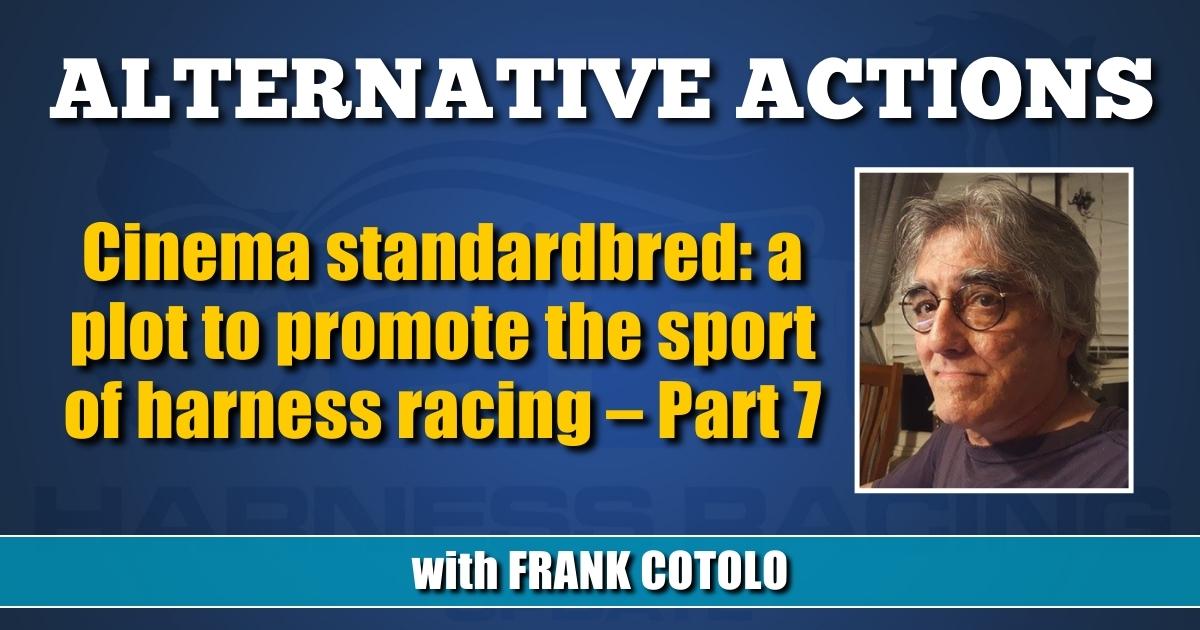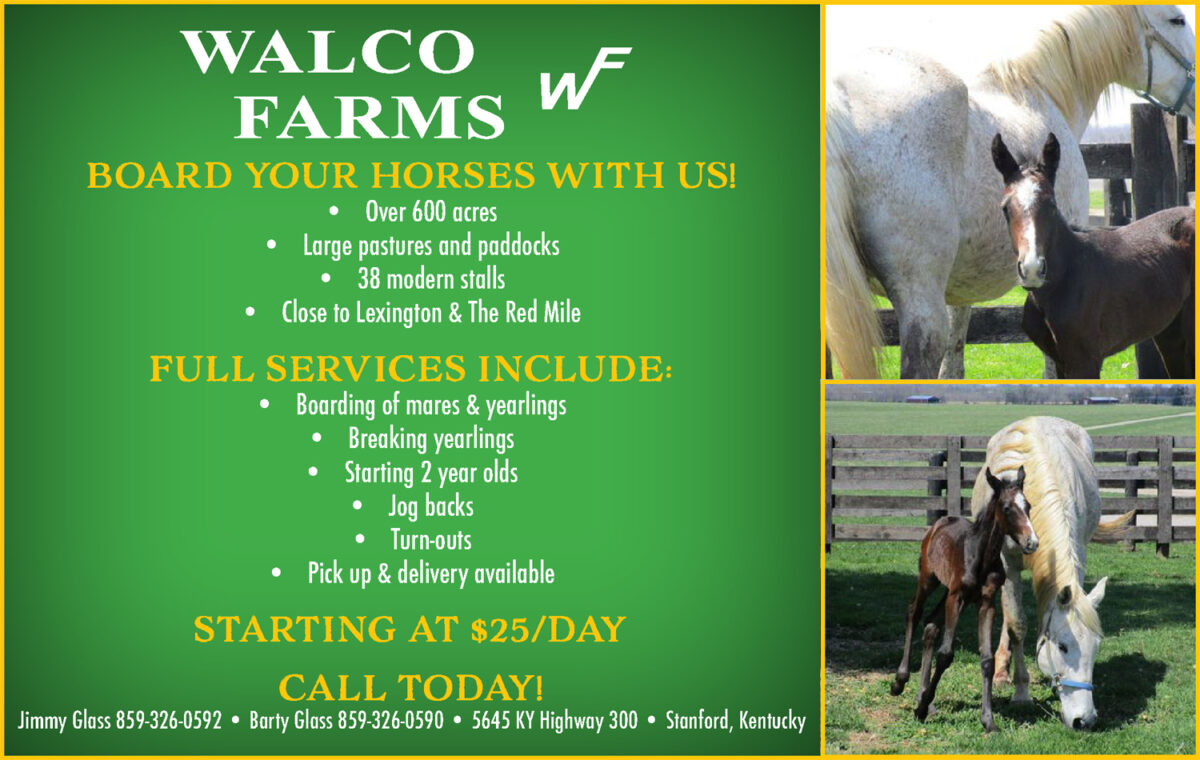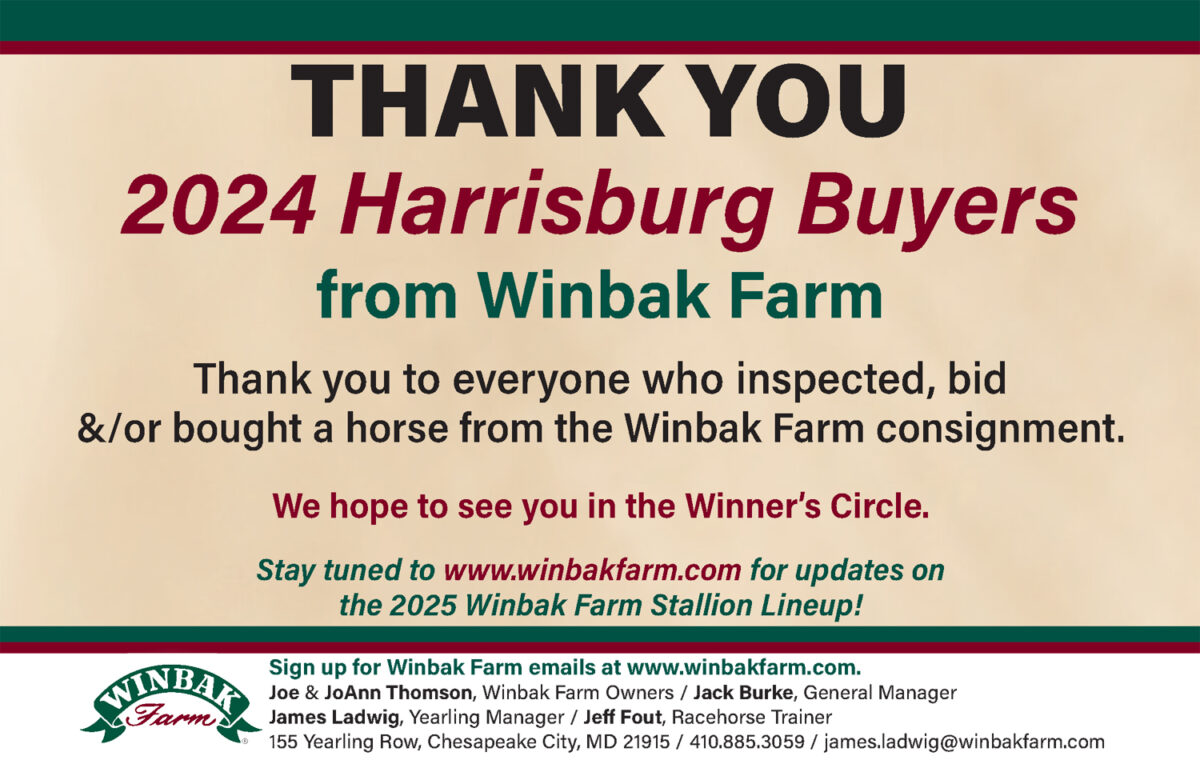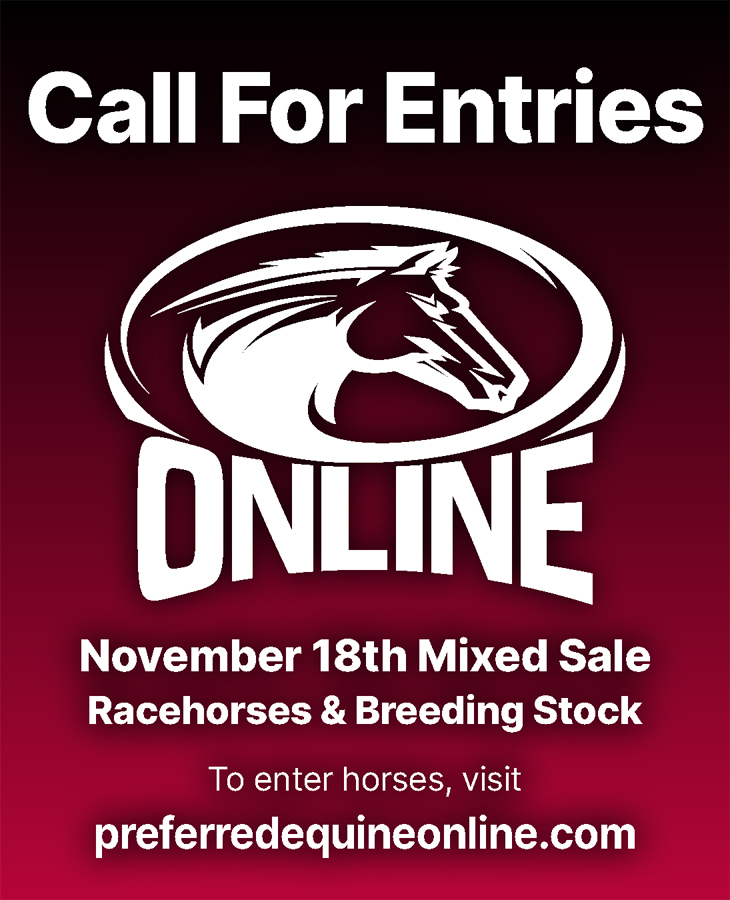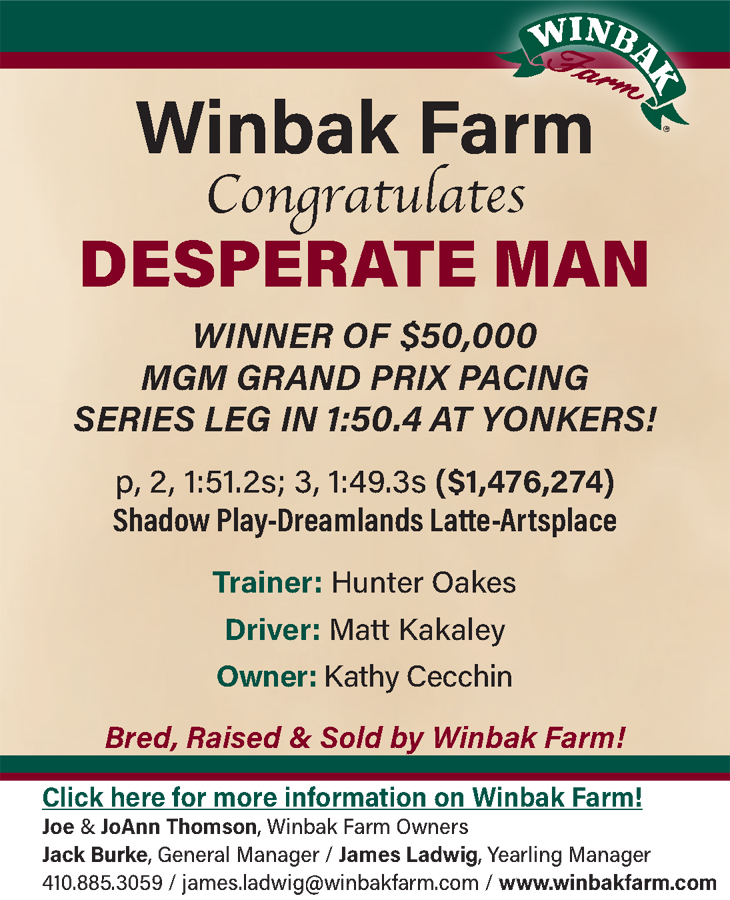Cinema standardbred: a plot to promote the sport of harness racing – Part 7
by Frank Cotolo
Alternative Actions (AA) continues its series developed to offer the solution that has the best chance to change the nature of the film industry’s ambivalence towards harness racing and perhaps inspire someone to pioneer a project that could be the most successful promotional tool standardbred racing ever utilized.
Part 1 is here.
Part 2 is here.
Part 3 is here.
Part 4 is here.
Part 5 is here.
Part 6 is here.
Next in the process of writing our re-imagined screenplay using the novel “Frankenstein,” we return to Mary Shelley’s story for essentials. In a previous part we explained how best to name nouns, i.e., people, places and things, and so named our main character, Dion Percy. Now we check Shelley’s cast of supporting characters and the naming process continues for our other characters.
Ralph Percy, Dion’s father
Theresa Percy, Dion’s mother
Joseph Percy, Dion’s younger brother
Frieda, Dion’s girlfriend
Karl Clive, standardbred trainer / breeder.
Always, our naming process leaves room for the author’s whim as well as references to the source; in fact, the more personal the choices, the stronger the author takes possession of reimagining a source version. In my cast, above, I chose:
Ralph, Dion’s dad; an Old Norse title for a rugged counsellor (also, the surname of my dad).
Theresa, Dion’s mother (also, my mother’s surname). Joseph, Dion’s younger brother; meaning “god will give,” a tie into how Dion gets his demigod complex (also my birth-given middle name).
Frieda, meaning “peace” which is a state of being Dion does not find (also the name of my teenage girlfriend and the name of a child girl the monster kills in “Bride of Frankenstein”).
Karl Clive, harness horseman whose name combines an actor and a character in the original two “Frankenstein” movies.
Have fun with that on both levels.
Wait. Where’s the creature? Can we reimagine the classic story without the creature? Stay with me, here, because this is a crucial step.
At this point, the author should be aware the shape of a fresh tale has emerged. Thanks to following the source there are already solid story elements formed for a beginning, middle and end and the drama is looming without needing the “creature.” The fresh story tells me I can spin the Promethius angle with a different kind of creature. More about that later.
But let’s face it, I could not have gotten this far as without the source. I am deeply involved in this screenplay without having written useless drafts or laboring over an outline. Confidence insured, this is a place where the scriptwriter can freely stray from the source and concentrate on the importance of the harness-racing atmosphere.
In essence, the “role” of standardbreds in our example play must have the same depth as we applied to names. An audience must immediately accept its presence as a “perfect entity,” that is, a setting with importance, a setting devoted to assist in satisfying the premise. This is essential in any piece of structured literature.
Take, as a perfect example, the setting of Arthur Miller’s 1957 short-story “The Misfits,” which he reimagined into a film script with the same title in 1961.
“The Misfits” takes place in 1950s’ Nevada, where throughout the state’s barren dessert, the story’s top characters are weathered cowboys who hunt for wild horses in order to capture and sell them to slaughter to companies making pet-food. It is a faultless setting and once the audience meets the characters it understands the “nature” of the setting. It’s a desolate place. It’s a world with inherent strength over human and animal misfits and it offers no mercy. Indeed, the metaphors resound.
I must use the “harness racing” setting my reimagined script so it resonates as strongly. Thankfully, the play already has a sound foundation so that an audience does not have to know a thing about, no less like or understand, harness racing. It will accept harness racing as a perfect entity. By the way, to accomplish this alone legitimizes the standardbred sport in ways no other film script has been able to in the history of movies. Here’s how we insure the setting.
A key for that initiative is not a trotter or a pacer, it’s a character — the Karl Clive character. Karl is presented as a moderately successful veteran standardbred trainer/breeder who is in the of the setting. His farm (complete with training track) borders the spacious acreage of the rich Percy family. Neighbor Karl mentors Dion (just as Shelley’s Doctor Waldman inspires Victor Frankenstein in the source). Karl becomes a surrogate father to the youthful Dion, sharing years of advice, warnings and wisdom unavailable to Dion from father Ralph.
Due to the nature of Karl’s character, the standardbred atmosphere he masters automatically represents a positive force, one that assures the audience it is holy ground, at least compared to the Percys’ home where there is deep emotional conflict. Karl’s modest school for harness horses makes Dion humble, whereas the Percy family’s stodgy status promotes entitlement to Dion and his brother, which creates false and cruel expectations. The conflict of the settings is strong with fabrics that eat at Dion’s soul and, we realize from the premise, will have Dion haunted by Karl’s wisdom as he cultivates hubris as his weapon for success.
In Part 8 we sit on the precipice of writing our masterpiece. Stay with us.







